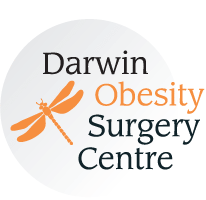

RISK ASSESSMENT
Whilst the laparoscopic approach has helped shorten the length of hospital stay by decreasing the postoperative recovery period, the insertion of the gastric band is not without complications because of the weight of the patient and his/her premorbid condition.
As with any surgical procedure, there are associated risks to the patient. Whilst your surgeon will endeavour to minimise risks, complications may occur which may have permanent effects.
Open surgery (laparotomy)
Whilst your surgeon may have recommended laparoscopy to insert the gastric band, he/she may find that, after starting the procedure, this approach is not safe due to unexpected findings or events. Converting from a laparoscopic to an open approach is not a complication of the procedure but rather to protect the interest of the patient's safety and well being. A potential complication to an open incision is the possibility of an incisional hernia in the long term. The likelihood of this is higher in obese patients compared to those with normal weight and is approximately 2%.
![]()
GENERAL RISKS OF SURGERY
These are risks that are common to all operations. However, because of your weight, you may be at greater risk of suffering complications from the operation. The risk increases with increasing age and weight and whether the patient has a heart condition, diabetes or hypertension.
Top of page
Cardiovascular problems such as heart attack or thrombosis.
Thrombosis refers to the formation of blood clots in the leg. The blood clots may move to the lung or heart and hence may be fatal.
Top of page
Infection of the wounds or failure of the wounds to heal properly.
This is more likely to occur in patients with diabetes.
Special measures will be taken to reduce these problems to a minimum, but in spite of these measures, a significant complication will probably occur in about 1% of all patients.
Specific risks associated with laparoscopic surgery
Excessive bleeding
Infection
Injury to organs near the stomach
Injury to the stomach wall
Injury to major blood vessels
Gas embolism from the gas used to insufflate your abdominal cavity
GENERAL ADVICE AND POSSIBLE SIDE EFFECTS
Vomiting
Patients may vomit or feel pain after food intake. This can be caused either by a poor eating behaviour, or by the narrowing of the AGB following the injection of fluid into the balloon. By eating slowly and calmly, you will learn to listen to the signals from your stomach. Regular vomiting is definitely a warning sign. In such cases, the amount of liquid in your AGB may need to be readjusted.
Vitamins
During the phase of rapid weight reduction, vitamin supplements are advisable. A liquid vitamin mixture containing multivitamins, in particular the vitamin B complex, is recommended for at least the first 6 months following surgery
Pregnancy
The period between surgery and weight stabilisation is considered to be a period of starvation. It is not advisable to become pregnant during starvation, despite the fact that the foetus has priority over the mother with regard to food. Should you nevertheless get pregnant, it is advisable to remove all the fluid from the balloon. You should wait until your weight has stabilised before becoming pregnant.
Medication
Tablets must be broken down into small pieces or crushed before they are taken. It is common that medication for conditions such as hypertension, diabetes or asthma may need to be altered (reduced) after this operation. Patients should consult their doctors about this matter.
Constipation
Many patients feel constipated after surgery. This is mainly because the reduced food intake leads to less faeces and thus fewer bowel movements. If laxatives become necessary, it is advisable to abstain from so-called bulking agents and instead use liquid laxatives, such as lactulose.
Doctor Appointments
After surgery you must undergo regular check-ups as an outpatient. Initially, these check-ups will be carried out monthly, but soon visits will become less frequent. The AGB will gradually be filled via the injection port during the first 18 months following surgery. During this period, your weight loss and level of well-being will be monitored. Once your weight has stabilised, check-ups will be necessary only when problems occur or on an annual basis
Physical Activity
It will be important to alter not only your eating habits, but also your level of physical activity. Patients are generally recommended to start exercising slowly. As weight loss is achieved, physical activities will gradually become easier.
ADVANTAGES AND DISADVANTAGES OF GASTRIC BAND
Safest procedure
The laparoscopic adjustable gastric band is regarded as the safest weight loss surgery operation currently available in Australia. This procedure does not require parts of the stomach to be removed or stapled as with other bariatric procedures. Nutrients are therefore absorbed from food in the same way that they were prior to surgery. Further the band can be removed thus the procedure can be fully reversed.
Less risk of dumping syndrome
After gastric banding the outlet of the stomach (the pylorus) remains fully intact, unlike after gastric bypass, and less so with sleeve gastrectomy. Hence there is less risk of the so-called "dumping syndrome". Dumping syndrome can cause indigestion, pain, diarrhea and other symptoms.
Disadvantages of Gastric Band
The intensity of follow up: frequent band adjustment appointments are required (usually 3 to 5), especially in the initial stages after surgery, to achieve sufficient restriction.
The gastric band is a mechanical device and therefore there can be issues in the long term. Some patients may need further surgery in the future to revise or modify the band in some way.
ADVANTAGES & DISADVANTAGES OF SLEEVE GASTRECTOMY
Advantages of Sleeve Gastrectomy Less hunger
The stomach produces a hormone ghrelin, that induces hunger. As a portion of the stomach is removed, the stomach releases less ghrelin, so the feeling of hunger is reduced.
Less invasive than gastric bypass, no foreign device.
Sleeve gastrectomy is less invasive than gastric bypass, with no cutting, disconnection or alteration of the small intestine. Thus the risk of several surgical complications is reduced. Also no foreign artificial devices (such as a gastric band) is put inside the body. There is nothing to slip, erode or cause infection. Disadvantages of Sleeve Gastrectomy.
Irreversible
The greatest disadvantage is that the procedure is irreversible, as a part of the stomach is permanently removed.
Stomach may stretch
If a person keeps trying to eat the same volume of food as before surgery, the stomach can stretch and enlarge. This can result in weight regain after 3 to 5 years.
Other Disadvantages
There is a slightly higher complication rate following sleeve gastrectomy than gastric banding. Further, long term results (more than 10 years) are lacking, following sleeve gastrectomy, than with either gastric banding or gastric bypass.
ADVANTAGES & DISADVANTAGES OF GASTRIC BYPASS
Advantages of Gastric Bypass - the most effective procedure
Gastric bypass tends to be the most effective procedure in terms of weight loss, as well as other obesity related health issues, such as diabetes, high blood pressure, high cholesterol, and risks of heart attack, strioke and certain cancers. Most patients have an almost immediate reduction in their need for diabetic medication and some are able to completely stop diabetic medication altogether.
Less aftercare
Gastric bypass does not require any on-going adjustments which are required with the gastric band. Regular follow up is however necessary to ensure weight loss is appropriate and intake is nutritionally adequate.
Disadvantages of a Gastric Bypass
Disadvantages generally related to the magnitude of the surgery.
Difficult to reverse
Although it is technically possible to reverse this operation, this is much more involved than with gastric banding (for example) and reversal is only undertaken in rare situations.
Complications, although rare, are generally more serious than with other weight loss procedures, such as the gastric band.
There is a higher risk of nutritional deficiency due to the reduced absorption of vitamins and nutrients. Life-long vitamin and mineral supplementation is essential to prevent deficiency following surgery. Long term follow up with the surgeon and dietitian to monitor nutritional status is also very important.
After surgery you must undergo regular check-ups as an outpatient. Initially, these check-ups may be carried out monthly, but soon visits will become less frequent.
The Adjustable Gastric Band will gradually be filled via the injection port during the first 18 months following surgery.
During this period, your weight loss and level of well-being will be monitored. Once your weight has stabilised, check-ups will be necessary on an annual basis..
Darwin Obesity Surgery Centre
Darwin Private Hospital
Rocklands Drive
TIWI NT 0810
Phone (08) 7981 5694
Facsimile (08) 7981 5698
Laparoscopic Surgery in Darwin Weight Loss Surgery for Morbid Obesity Surgical Procedures for Morbid Obesity |
Weightloss options for Morbid Obeisty Laparosocopic (Keyhole) Surgery for Severe Obesity Endoscopic (Telescope) Surgery for Severe Obesity |
Darwin Weight Loss Surgery Diabetes and Obesity in Darwin Weight Loss Surgery in Darwin |